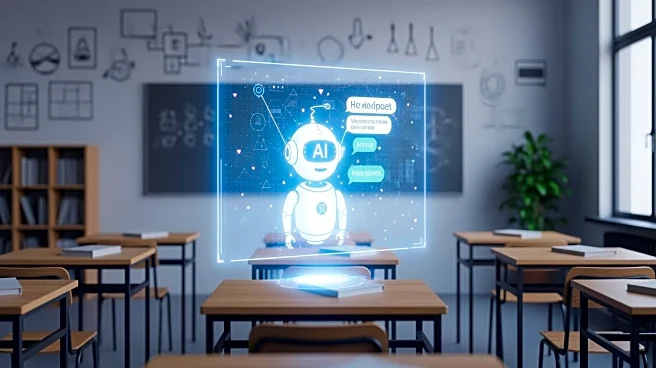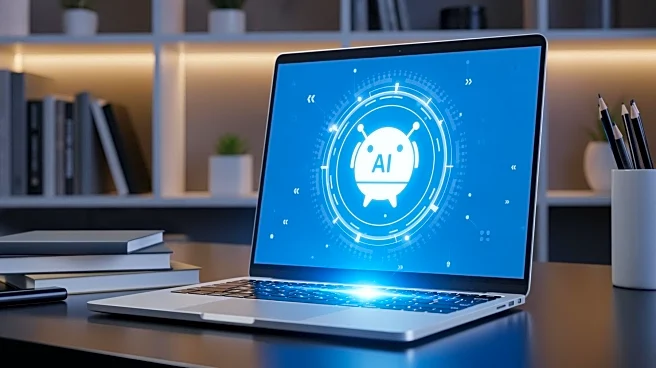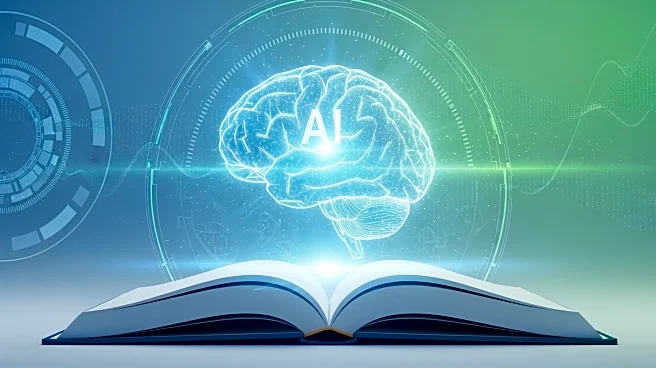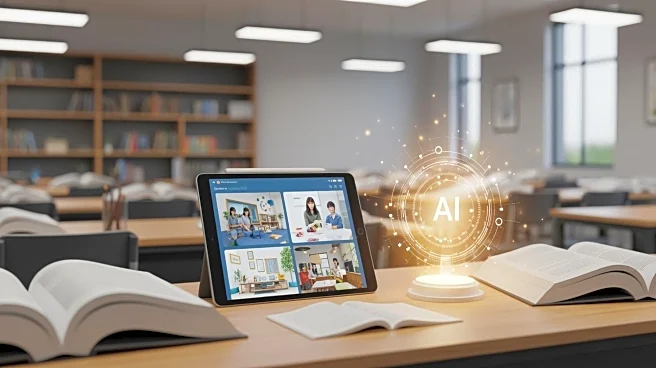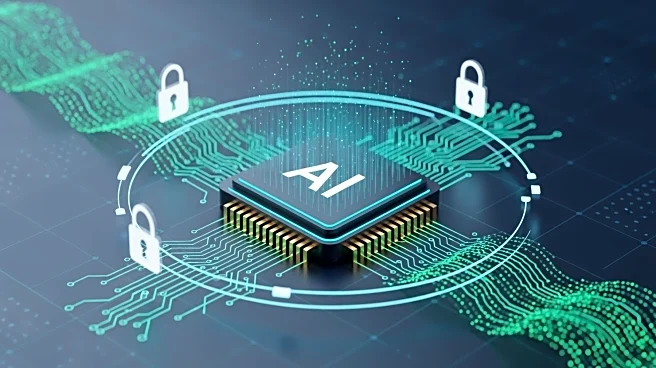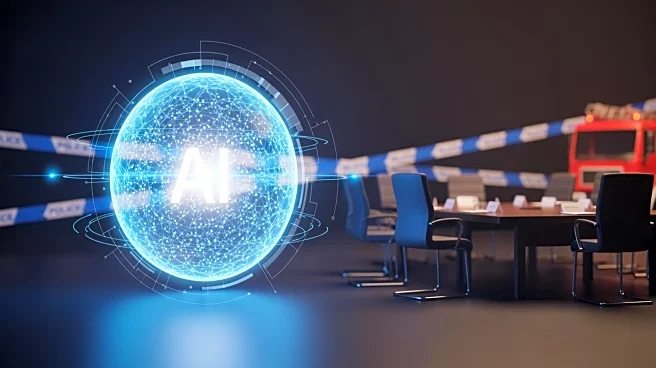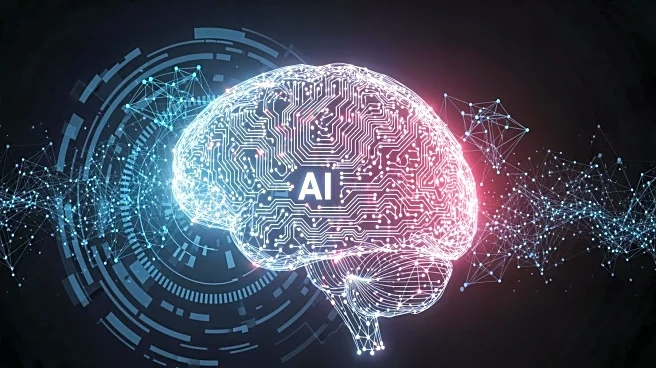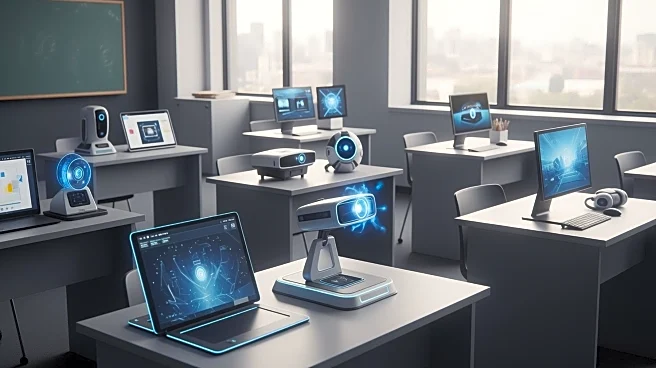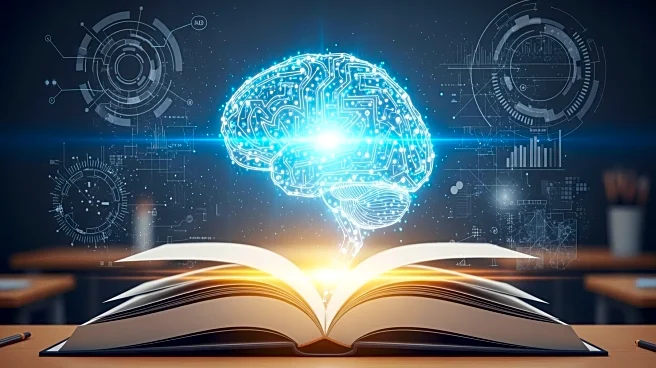What's Happening?
Recent research indicates a significant number of students are utilizing AI chatbots like ChatGPT for various purposes in schools, including academic assistance and personal relationships. According to
a survey by the Center for Democracy & Technology, 86% of students have used AI chatbots in the past academic year, with half using them for schoolwork. The survey also revealed that nearly a fifth of students have used these chatbots to form romantic relationships, and 42% have used them for mental health support or as an escape from real life. While AI technology is being integrated into schools with the promise of improving student outcomes, there are concerns about the potential social and emotional disconnection from human interactions.
Why It's Important?
The integration of AI chatbots in educational settings presents both opportunities and challenges. On one hand, these tools can enhance learning experiences and provide support for students. On the other hand, the reliance on AI for personal and emotional needs may lead to a decrease in face-to-face interactions, potentially affecting students' social skills and emotional development. As AI becomes more prevalent in schools, educators and policymakers must consider the implications for student well-being and the balance between technological convenience and human connection.
What's Next?
As AI technology continues to evolve, schools may need to implement guidelines and policies to ensure its responsible use. Educators might focus on fostering environments that encourage human interaction alongside technological tools. Additionally, ongoing research and monitoring of AI's impact on students will be crucial in adapting educational practices to safeguard student development.
Beyond the Headlines
The ethical considerations of AI in education extend beyond immediate concerns. Long-term implications include the potential for AI to influence educational equity, privacy issues, and the shaping of future generations' interpersonal skills. As AI becomes more integrated into daily life, society must address these broader impacts to ensure technology serves as a beneficial tool rather than a detriment.
